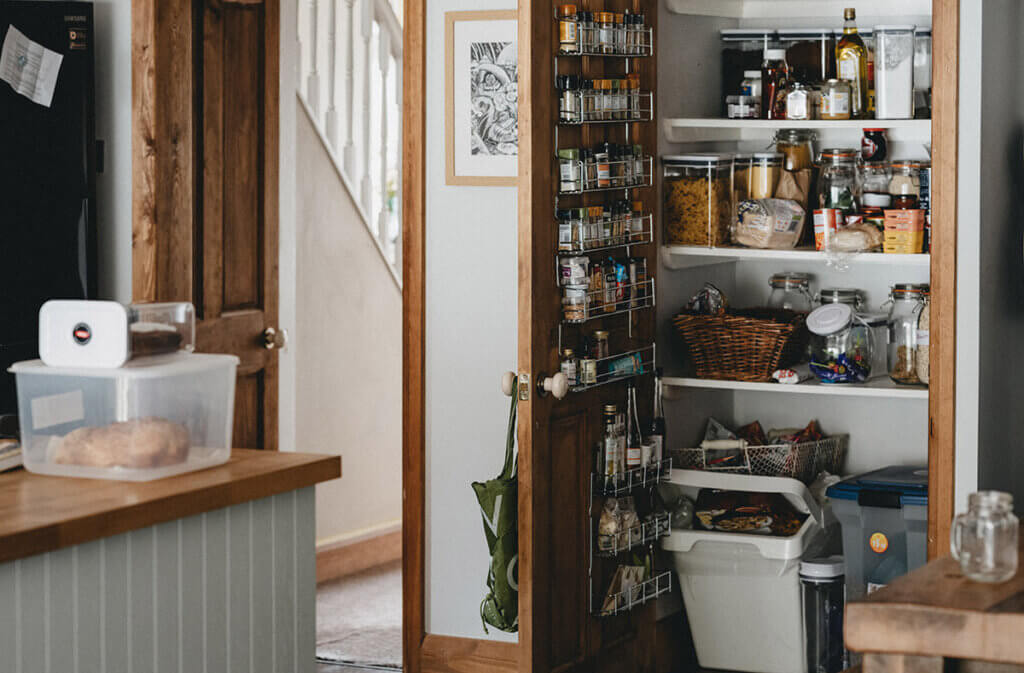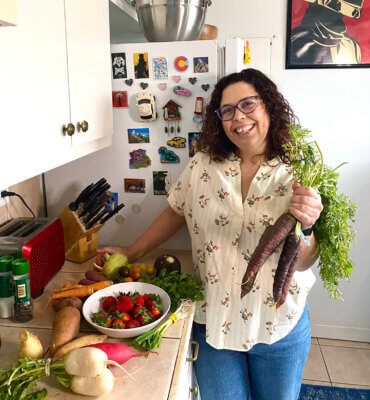
At Castle Hill Fitness, we focus on health as a whole, not just physical fitness. Well-rounded healthy living includes a nutritious and balanced diet. Like with exercise, it requires commitment, thought, and a little bit of help. March is National Nutrition Month, and we’re excited to dive deeper this month into the importance of a healthy eating plan. In this blog post, Personal Trainer and Health Coach, Tara Penawell, gives tips on making over your kitchen! Read on to learn more, and for a promo code to enjoy farm-fresh food at home!
READY FOR A KITCHEN MAKEOVER?
In my last blog post, I introduced the idea of “shaping the path” to help facilitate positive behavioral changes, like eating more healthfully. Now, we’re going to talk about how you can use this idea to revamp your kitchen setup. I’m going to give you a practical framework for making small or large changes in your kitchen that will help you enjoy the space and eat more nutritious, healthy foods.
START TO SHAPE YOUR KITCHEN
Take a look around your kitchen. Assess how it flows, how you use it, and what the barriers are for when it comes to cooking or eating to meet your goals. Think about it and write down ideas.
What type of environment would you like to create in your kitchen? Do you want to encourage your kids to eat healthier snacks? Do you want a kitchen that makes it a snap to meal prep on Sundays? Do you want to cook meals instead of eating out all the time? Think of what is working well and what isn’t, what you’re missing, or what you can get rid of.
Once you’ve taken stock of this, think of how you can rearrange cabinets to make certain things you use all the time more accessible. Maybe you would cook more if you could actually see your spices and knew what you had. Perhaps you need better knives or new prep bowls. This is an important step because we all have different needs and ways of approaching cooking. How can you make it easier for yourself?
Once you’ve got an idea of the flow of your kitchen, then it’s time to take a good hard look at what’s in your refrigerator, freezer, pantry, or other storage areas. Determine what you want to keep, get rid of, buy, or rearrange. If the idea is to eat more nutritious meals, then it makes sense to figure out what exactly that means. One way to evaluate what we eat is by using the traffic light system.
Green Light foods = Go For It! Eat these every day.
Yellow Light foods = Go Easy! Eat these foods sometimes but not every day.
Red Light foods = Whoa! Think before you eat.
Let’s dig a little deeper into this.
GREEN LIGHT FOODS

Farm to Table produce = great example of green light foods!
Green light foods are minimally processed, offer balanced nutrients, are higher in essential vitamins, minerals, and fiber, and can be eaten within reasonable amounts. Common foods in this category are fruits and vegetables, lean meat and fish, eggs, nuts and seeds, beans and
lentils, and low-fat dairy. Basically, most whole foods are going to fall into this category.
It’s important to note that each person’s list of green light foods might be slightly different. I love peanuts and they would be on my green light list, but if you’re allergic, then they would move to red.
YELLOW LIGHT FOODS
Yellow light foods are ones to go easy on. These are fine to eat occasionally, but you don’t want to build your whole diet around them. They are generally more processed. Examples of this type of food are processed meat, refined bread and cereals, crackers, chips, pasta, cheese, or flavored, sugary yogurt. They might also be foods that make you feel lousy when you eat too much of them, but are fine in small doses.
Essentially, these aren’t the worst choices you could make, but they’re not packed with nutrients either.
RED LIGHT FOODS
Red light foods are foods we may want to think twice about eating very often. Perhaps we eat these once a week or less. They include items like deep-fried foods, processed meat with high fat content, cakes, pastries, or sugary drinks. Yet, there are multiple more reasons we might put foods into this category.
It could be that we have a very difficult time controlling ourselves around these foods. (This is why I never keep ice cream in the freezer.) Foods could be classified as red light because of intolerance, allergies, or you just don’t like them. Lastly, we can make this classification because it just doesn’t help us reach our current goals.
MAKEOVER TIME!
Once you’ve classified everything you have, it’s time to bring out the trash bags/donation bags/compost box! Focus on moving your red light foods out of the kitchen, or to higher shelves – the goal is to make it so they’re not the first thing you see when you look around your kitchen. Try to make them less convenient compared to other food.
Make the green light foods easier to see, and prep them if necessary. For example, if you only like carrots when they’re sliced up, then go ahead and pre-cut them to make them an easier option. If you don’t have a large list of green light foods around, think about what you could add. Think of how to make healthier eating more convenient. Maybe it would work better for you to get frozen or canned produce versus fresh, to make sure you use them?
With the yellow light foods, think about how you can upgrade them to slightly healthier versions in the future. Do these foods help you eat more green foods? Like those croutons you love, will you love to eat them on salads? If so, put it in the keep pile! If you can’t convert these into more green light foods, perhaps limit how often you buy or eat them.
SMALL TWEAKS CAN MAKE A BIG DIFFERENCE
Remember that any small change made has the power to create a more supportive, enjoyable environment for ourselves. This framework can create easier pathways to your healthy eating goals, by evaluating your habits and barriers, and providing an easy nudge. If you aren’t ready to change the whole kitchen, think of small things and start there!
Nothing is more “green light” than a box of farm-fresh produce, and you can get it all delivered right to your door with Farm to Table. To help pack your kitchen with all the green light foods, we’ve partnered with Farm to Table to give you 10% off your next farm box! Use promocode CHF10 to order your discounted farm box online!
Farm to Table distributes locally grown farm products and partners with farmers and ranchers that use sustainable agriculture and avoid hormones and antibiotics.
 Tara, a NSCA-certified personal trainer, has dedicated the better part of her life to health, fitness, and coaching techniques. She earned her Masters Degree in Kinesiology from UT in 2004, then a Precision Nutrition and ACE Certified Health Coach certification. Through a habits-based, holistic approach, Tara has successfully helped many clients lose inches, improve their health, feel great in their clothes, and age gracefully.
Tara, a NSCA-certified personal trainer, has dedicated the better part of her life to health, fitness, and coaching techniques. She earned her Masters Degree in Kinesiology from UT in 2004, then a Precision Nutrition and ACE Certified Health Coach certification. Through a habits-based, holistic approach, Tara has successfully helped many clients lose inches, improve their health, feel great in their clothes, and age gracefully.
Click here to connect with Tara and to schedule a free 30-minute Health Coaching Consult!